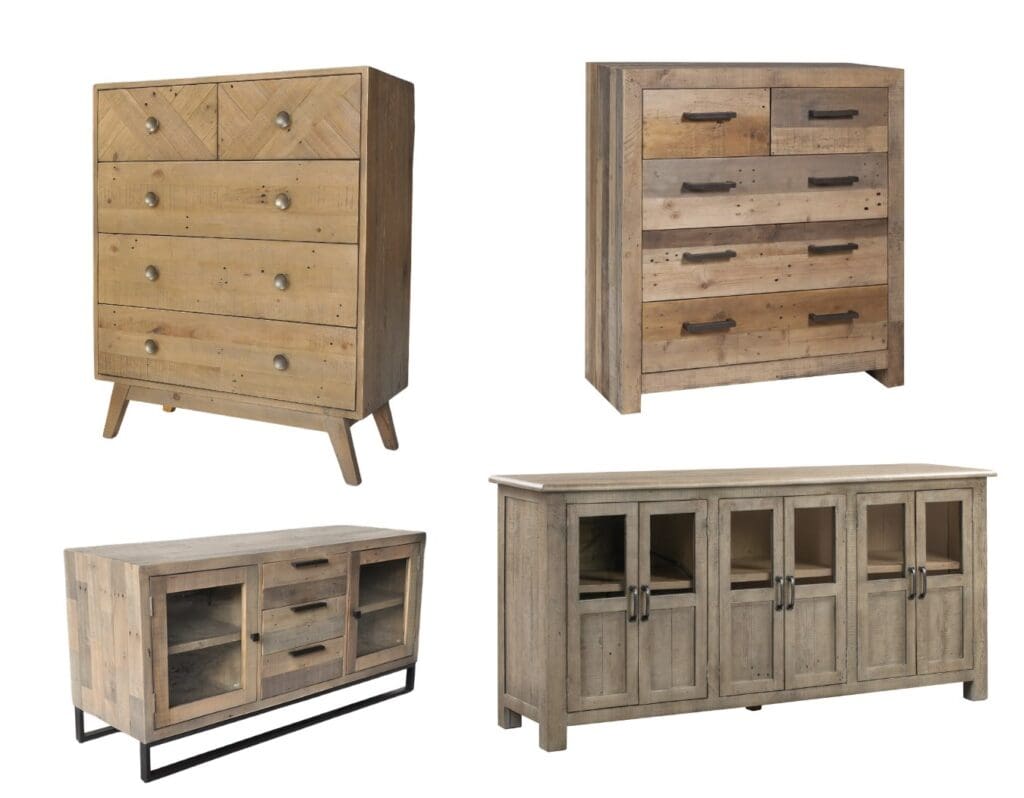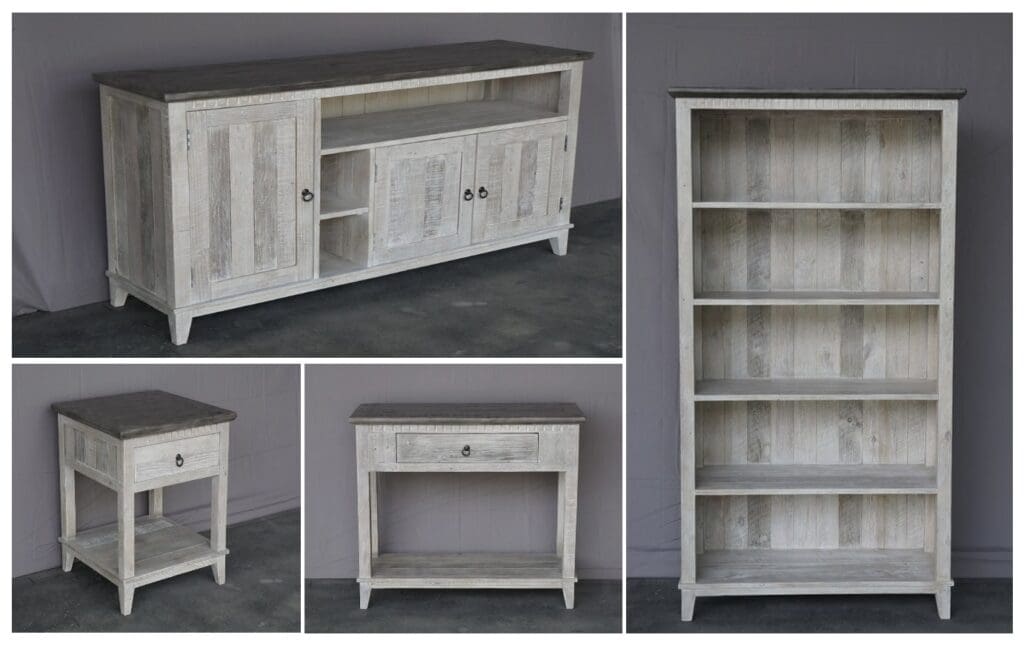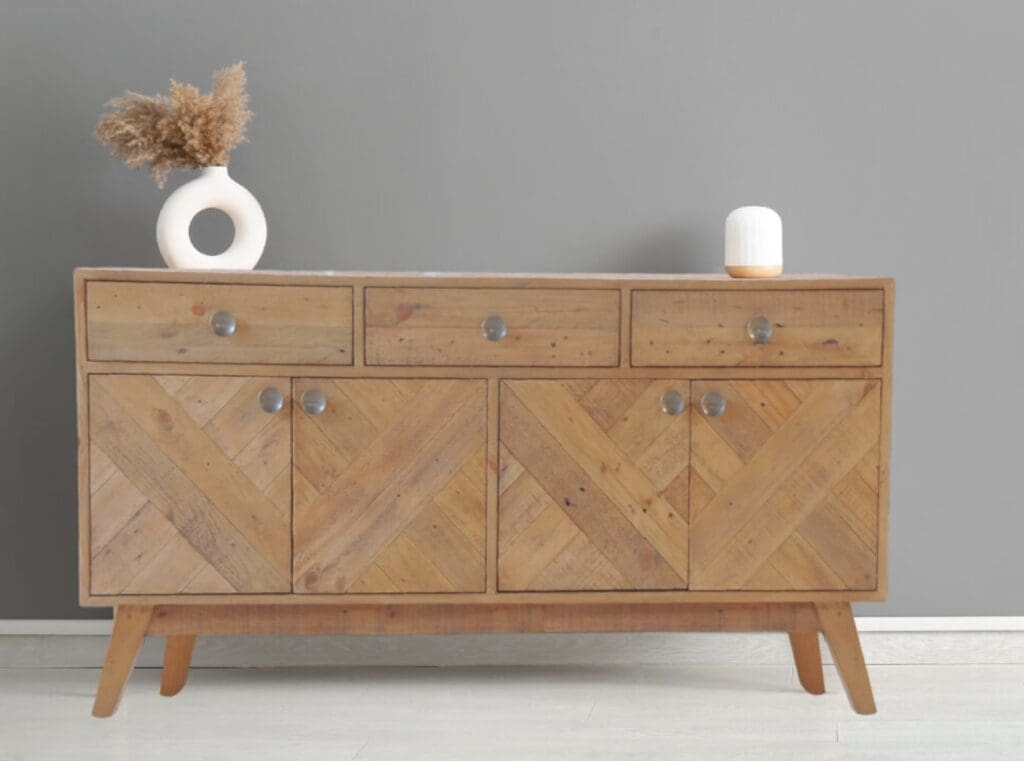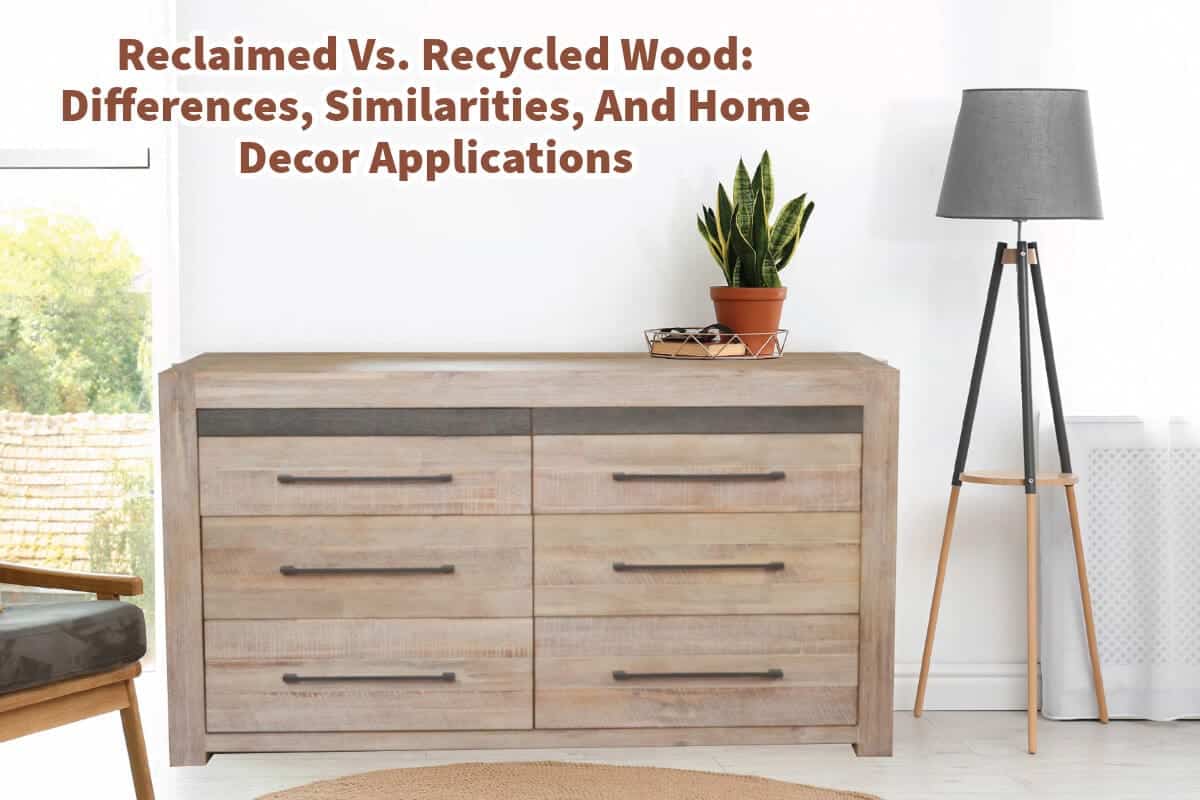Wood is pivotal in traditional and contemporary interior design, offering warmth, character, and durability.
However, in an era where sustainability is paramount, the focus has shifted towards more eco-friendly options such as reclaimed and recycled wood. Although often used interchangeably, these terms describe different processes and results. Understanding these distinctions can help homeowners, designers, and artisans make informed decisions about the materials they choose for decorating spaces or crafting furniture.
Table of Contents
- What Is Reclaimed Wood?
- What Is Recycled Wood?
- Differences Between Reclaimed And Recycled Wood
- Similarities Between Reclaimed And Recycled Wood
- Using Reclaimed And Recycled Wood In Home Decor And Furniture
- Mondoro Can Help Your Manufacture Reclaimed Wood Furniture And Other Items
- Related Content
What Is Reclaimed Wood?
Reclaimed wood refers to wood salvaged from its original application for use in a new project. This typically includes timber from old barns, factories, warehouses, and decommissioned ships.
Reclaimed wood is prized for its history, aesthetic appeal, and the character it adds to an item or space. Each piece carries unique traits, such as weathering, knots, and color variations, that tell a story of its past life.
Benefits Of Reclaimed Wood
- Environmental Impact: Utilizing reclaimed wood reduces the demand for newly harvested wood from forests, helping to conserve natural resources.
- Aesthetic Value: It often features a patina that only time can create, offering irreplaceable authenticity and rustic charm.
- Strength and Durability: Due to its age, reclaimed wood typically comes from old-growth trees and is denser and more stable than newer wood.
What Is Recycled Wood?
Conversely, recycled wood generally refers to wood repurposed from various sources, including post-consumer wood scraps, broken furniture, and manufacturing leftovers.
Unlike reclaimed wood, recycled wood usually undergoes a process to remove imperfections and may be reprocessed into engineered woods like particle board or fiberboard.
Benefits Of Recycled Wood
- Reduced Waste: Recycling wood helps reduce waste by repurposing scraps and leftovers that might otherwise end up in a landfill.
- Cost-Effective: Often less expensive than new and reclaimed wood, recycled wood offers a budget-friendly option for consumers.
- Versatility: It can be treated, colored, and modified to suit various design needs.

Differences Between Reclaimed And Recycled Wood
The primary difference between reclaimed and recycled wood lies in their origin and the extent of processing they undergo:
- History vs. Composition: Reclaimed wood is valued for its historical significance and minimal alteration, preserving its original form. Recycled wood, however, is valued for its adaptability and may be significantly altered or combined with other materials.
- Processing: Reclaimed wood typically undergoes less processing to preserve its natural beauty and strength. Recycled wood is often broken down and reformed, sometimes mixed with synthetic materials.

Similarities Between Reclaimed And Recycled Wood
Despite their differences, reclaimed and recycled wood share several key similarities:
- Sustainability: Both materials are eco-friendly alternatives to new wood, helping to reduce deforestation and waste.
- Applications In Design: Both can be used creatively in various home decor and furniture aspects, appealing to those looking for unique, environmentally conscious options.
- Aesthetic Flexibility: Both types of wood can be adapted to various styles, from rustic to modern, depending on how they are treated and presented.

Using Reclaimed And Recycled Wood In Home Decor And Furniture
In the home decor and furniture market, both reclaimed and recycled wood offer diverse applications:
- Furniture: Reclaimed wood lends itself beautifully to statement pieces such as dining tables, coffee tables, and shelving units, where its history and unique characteristics can be showcased. Recycled wood is often used in more practical, cost-effective products like bookcases, chairs, and desks.
- Flooring And Wall Paneling: Reclaimed wood floors or wall panels can add a touch of rustic elegance to a home. They boast durability and a rich patina developed over decades. Recycled wood products can also be used for similar purposes, mainly where cost or material uniformity is a priority.
- Art And Accents: Both types of wood can be transformed into art installations, frames, and other decorative elements that add personality and tell a story.
Reclaimed and recycled wood offer valuable alternatives to new wood, each with unique attributes and uses. Whether you opt for the rustic charm of reclaimed timber or recycled wood’s versatile, eco-friendly nature, both materials can help create beautiful, sustainable spaces.
As we continue to seek environmentally responsible resources, the role of reclaimed and recycled wood in design and architecture is only set to grow, blending heritage with modernity in homes worldwide.

Mondoro Can Help Your Manufacture Reclaimed Wood Furniture And Other Items
At Mondoro, we are committed to sustainability and craftsmanship in creating distinctive home decor and furniture. Our skilled artisans harness the charm and history of reclaimed wood, transforming it into high-quality furniture, lamps, and unique home decor pieces.
This practice breathes new life into materials that might otherwise be discarded and adds an irreplaceable aesthetic value to each item.
For years, our manufacturers have honed their skills, ensuring that every piece they craft meets our high standards of quality and uniqueness. Reclaimed wood’s texture, color, and grain bring a story to your space that new materials simply cannot. Whether you are decorating a cozy corner or furnishing an entire room, Mondoro’s products offer both environmental friendliness and exceptional style.
If you’re intrigued by the possibility of incorporating these beautifully crafted, sustainable products into your home or project, don’t hesitate to reach out. Anita at sales@mondoro.com is eager to discuss how our bespoke pieces can elevate your living spaces. We’re excited to share our passion for reclaimed wood and look forward to helping you discover the perfect additions to your decor.
Listen To Our Podcast About Reclaimed vs. Recycled Wood: What Are the Differences, Similarities, and Home Decor Applications?
Below or By clicking here.

Find out more about how Mondoro can help you create, develop, and manufacture excellent home decor and furniture products – don’t hesitate to contact me, Anita. Check out my email by clicking here or become a part of our community and join our newsletter by clicking here.
Mondoro gives out a FREE Lookbook to anyone interested. You can receive a copy of our latest Lookbook by clicking here.
Listen to our Podcast called Global Trade Gal. You can find it on all major podcast platforms. Try out listening to one of our podcasts by clicking here.
Subscribe to our Mondoro Company Limited YouTube Channel with great videos and information by clicking here.
Related Content
Is There A Market For Reclaimed Wood?
The reclaimed wood method minimizes waste, decreases the necessity for new lumber production, and conserves the timber’s innate allure and historical essence. Moreover, reclaimed wood comes in various types, each possessing unique attributes and rich narratives. Characteristics such as weather-worn patinas, nail indentations, saw traces, and various other blemishes enhance the charm of reclaimed wood, making it a treasured choice among designers and builders.
You can learn more by reading our blog, Is There A Market For Reclaimed Wood? by clicking here.
Recycled Vs. Reclaimed Wood, Differences Explained
Recycled wood is reprocessed from a material that once had another use than the original. Reclaimed wood is made into a product, but the effect is being used in a new way, so the object is being reclaimed instead of thrown out. Both recycled and reclaimed wood help save the environment and are good choices if you want to help the environment.
You can learn more by reading our blog, Recycled Vs. Reclaimed Wood, Differences Explained by clicking here.
What Are The Types Of Wood Used In Furniture?
Wood for furniture is divided up into complex and softwood. Though the woods have some similarities, they also have some differences. Different looks and types of furniture may require a certain kind of wood. Some wood species will be higher priced, and others will be cheaper; price, durability, look, color, finish, and structure can decide what wood to choose for your furniture piece.
You can learn more by reading What Are The Types Of Wood Used In Furniture? by clicking here.

